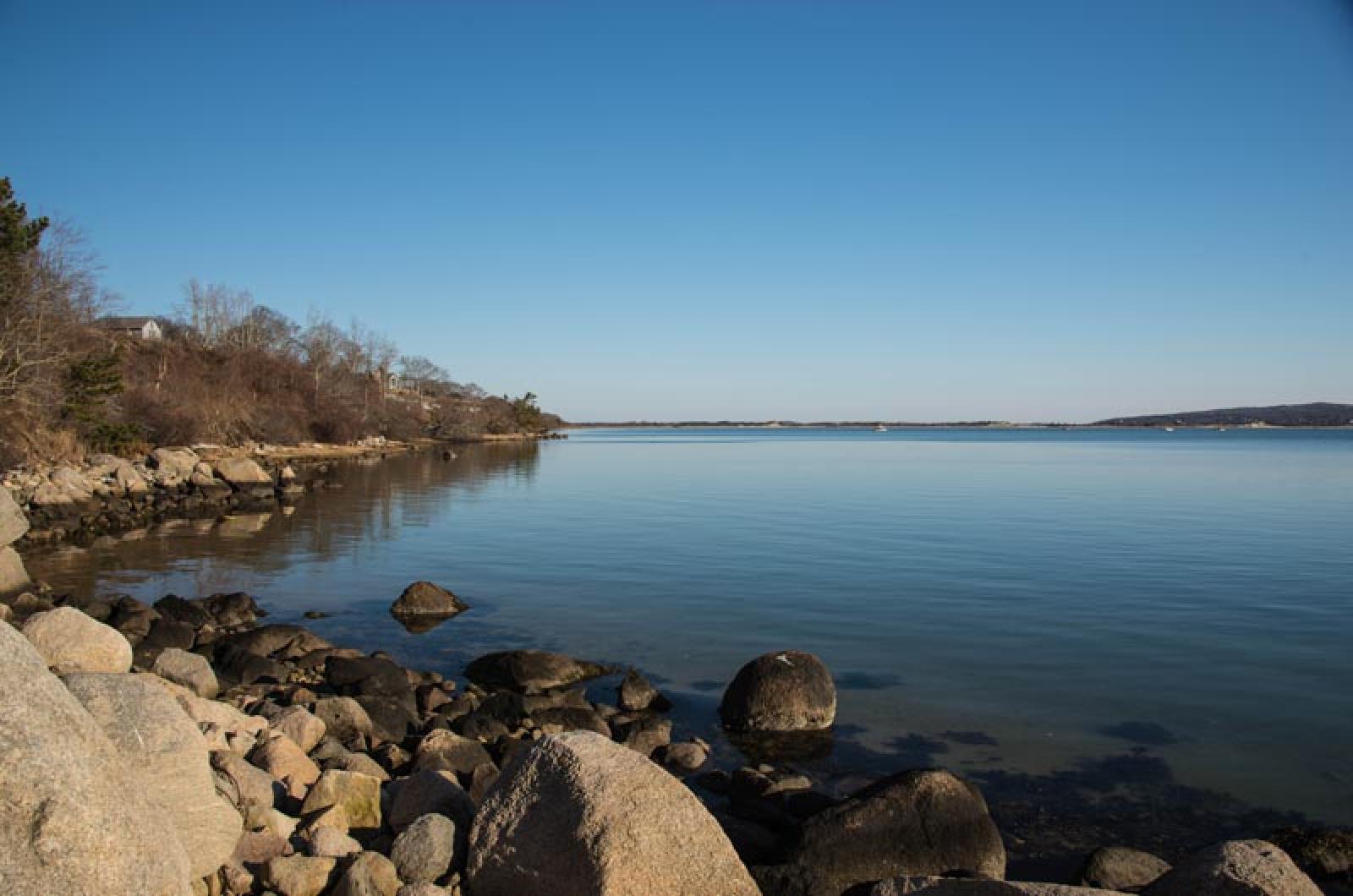A meeting called to discuss long-range management for the Menemsha Pond system took a surprise turn when a spokesman for the U.S. Army Corps of Engineers appeared to take an early measure of public opinion on a new plan to dredge the Menemsha channel.
Ed O’Donnell, New England chief of navigation for the Army Corps, said a recent survey determined the dredging is needed to ease navigation in and out of Menemsha harbor, where some areas are as shallow as two or three feet. He said the Army Corps estimates approximately 50,000 cubic yards of material needs to be dredged at a cost of “at least a few million dollars.”
Although nothing is definite yet, he said the Corps hopes to use federal money from a $50 billion relief bill for areas damaged by Hurricane Sandy.
“We would be looking to fast track this,” Mr. O’Donnell said. “My hope would be to do some dredging next fall if we can get through the permitting process.”
It all came as news to the group gathered from Chilmark, Aquinnah and the Wampanoag Tribe of Gay Head on Tuesday. They had intended to discuss the use of a $181,600 grant from the U.S. Fish and Wildlife Service to develop a cooperative management plan for Menemsha, Squibnocket, Stonewall and Nashaquitsa Ponds.
Instead the discussion turned to the pros and cons of dredging an eight-foot channel from Menemsha Basin through the creek and into the pond.
Mr. O’Donnell said the Army Corps will only pursue the project if the towns and the tribe support it.
“If the town doesn’t want to do the dredging they need to tell us they don’t want us to do the dredging,” Mr. O’Donnell said. “If we do get Sandy funds, they’re not going to be around once you turn them down. It doesn’t mean you can never have the federal government dredging your channel again, but getting funds to dredge the projects is significantly difficult.”
He said the channel was last dredged was in 1972.
Mr. O’Donnell also said the Army Corps would be sending out a hydrographic survey crew in the coming weeks to measure the depths in the channel. He said a full survey of the pond system would be done through LiDAR (light detection and ranging), which registers or measures thousands of data points over the earth’s surface.
Chilmark selectman Warren Doty raised concerns about the effects of dredging on rich shellfish beds in the pond.
“I think we probably have 15 commercial shellfishermen in this room, half from Aquinnah and half from Chilmark,” Mr. Doty said. “We’ve been having a good season in both towns for bay scallops . . . so the concern from every fishermen in this room is if this project is done, does it improve my fishing or make my fishing worse?”
Buddy Vanderhoop, a commercial fisherman in Aquinnah, said he recalled that the dredging in 1972 had positive results.
“The pond just reaped the benefits from that,” Mr. Vanderhoop said, adding it was “the best shellfish season . . . [Dredging] increased flow . . . and it was amazing what it did for shellfishing.”
“More flow more food,” he said.
But Chilmark shellfish constable Isaiah Scheffer took a different view.
“We ought to be really careful about what we do to the water body, because if we’re talking about the scallop fishery that could be potentially nonexistent because we choose to do something like this,” he said. “We’re having some of the better years we’ve had, and the best year we’ve had in 32 years. Why would we want to change something that’s working for us right now?”
Bret Stearns, natural resource director for the tribe, agreed with Mr. O’Donnell that navigation in the channel is problematic, and advocated for at least allowing the detailed surveys to be done.
“They’re saying, do you want it or not, what we need to do is model it to say, that may or may not be a good idea,” Mr. Stearns said. “If we don’t have an assessment we can’t move forward.”
Meanwhile, discussion about the long-range management plan for the pond system focused more broadly on cooperative work among the three government entities involving such things as removal of phragmites and restoration of salt marshes, oyster beds and eel grass.
“Eel grass is on everyone’s radar,” Mr. Stearns said. “We’ve lost just less than 17 per cent since 2001. We’re at a loss but we’re ahead of the game in terms of most communities. Eelgrass is a staple of success for these ponds. Without eel grass we don’t have bay scallops.”
The group will continue to meet regularly.







Comments
Comment policy »